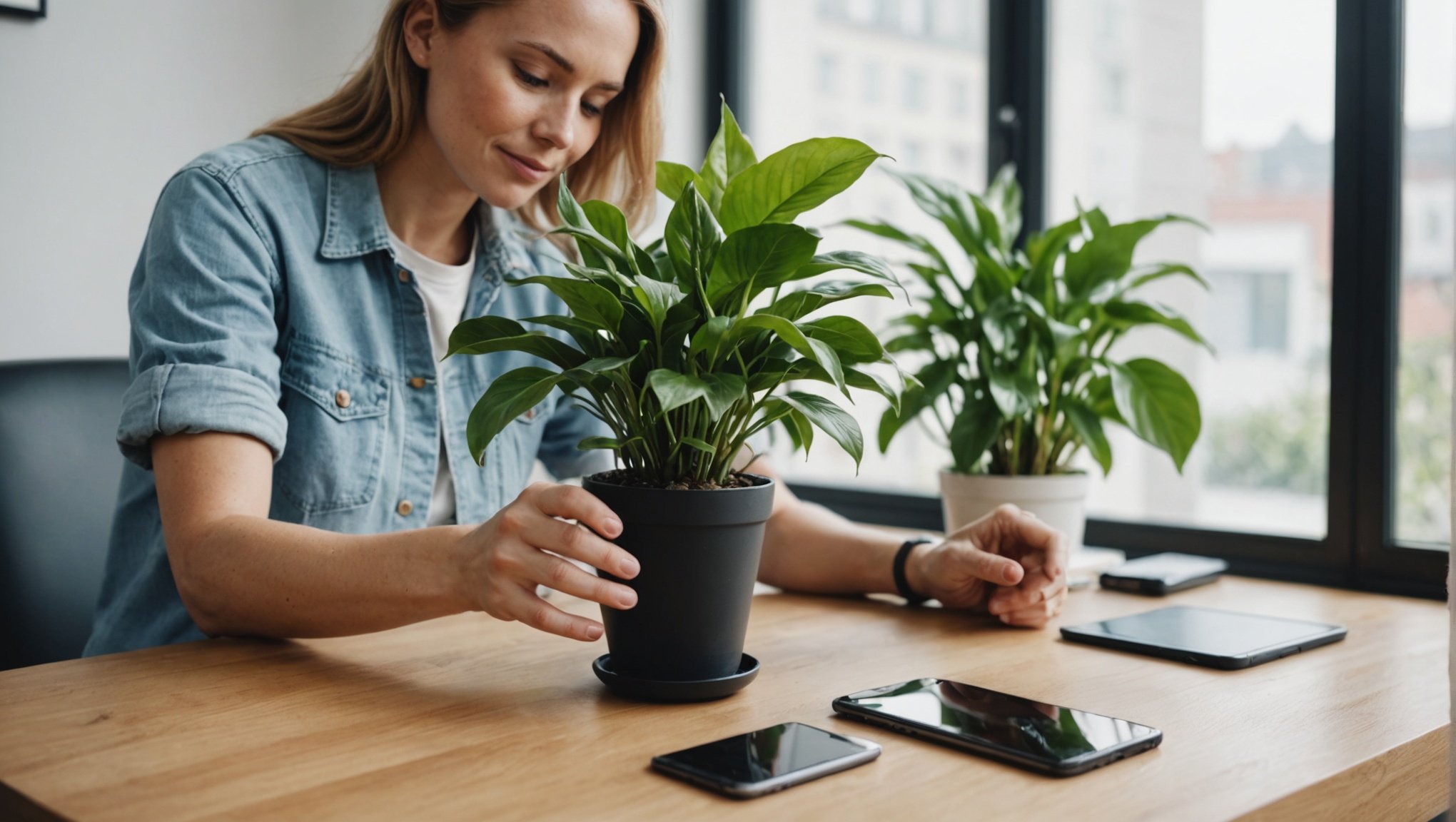In today’s fast-paced world, maintaining indoor plants can pose a challenge, especially for those with busy schedules. However, technology offers a solution. Smartphones, often considered mere communication devices, can now assist in optimizing indoor plant care. This article delves into how your smartphone can be a valuable tool in ensuring your houseplants thrive.
Revolutionizing Plant Care with Mobile Apps
Utilizing mobile apps for plant care is a game-changer. These apps can provide all the information you need to keep your indoor garden healthy and flourishing. By leveraging the capabilities of these applications, you can turn your smartphone into an indispensable gardening assistant.
Also read : How to Use Your Smartphone to Program and Control Robots?
Various plant care apps are available, each offering unique features. Some apps provide detailed instructions on plant care, including watering schedules, light requirements, and soil types. They also offer reminders to ensure you water your plants on time, preventing both overwatering and underwatering. Certain apps even allow you to take pictures of your plants to diagnose potential issues like pests or diseases.
Apps can also act as a database of plant information. You can search for specific plants to learn about their needs and growth habits. This information is crucial for creating an optimal environment for your indoor plants. By using plant care apps, you will have access to a wealth of information at your fingertips.
This might interest you : How to Use NFC Technology on Smartphones for Secure Payments?
Moreover, some advanced apps can connect to smart sensors in your plant pots, providing real-time data on soil moisture, light levels, and humidity. This data helps you make informed decisions about your plants’ care, ensuring their longevity and health. In essence, mobile apps are transforming the way we care for our houseplants, making the process more efficient and enjoyable.
Smart Sensors: The Future of Indoor Plant Care
Smart sensors represent the future of indoor plant care. These devices monitor various environmental conditions and provide data to help optimize plant health. By incorporating smart sensors into your plant care routine, you can gain valuable insights into your plants’ needs.
Smart sensors can measure soil moisture levels, ensuring your plants receive the right amount of water. Overwatering and underwatering are common issues for indoor plants, but smart sensors can prevent these problems by providing precise watering recommendations. Additionally, smart sensors can monitor light levels, helping you determine if your plants are receiving adequate light for photosynthesis.
Humidity is another critical factor for indoor plant health. Many houseplants come from tropical environments where humidity levels are high. Smart sensors can measure the humidity in your home, allowing you to make necessary adjustments. For example, you can use a humidifier or place your plants on a tray filled with water and pebbles to increase humidity.
Temperature control is also essential for indoor plants. Extreme temperatures can stress plants and hinder their growth. Smart sensors can provide real-time temperature data, enabling you to create a stable environment for your plants. By using smart sensors, you can take a proactive approach to plant care, ensuring your indoor garden thrives.
Light: The Lifeline of Indoor Plants
Light is a crucial element for the growth and well-being of indoor plants. Without adequate light, plants cannot perform photosynthesis, which is vital for their survival. Many indoor plants suffer due to insufficient light, but you can overcome this challenge by using your smartphone to manage and optimize light conditions.
Several apps use your smartphone’s camera to measure light levels in different areas of your home. These apps provide data on light intensity and duration, helping you identify the best spots for your plants. By placing your plants in areas with sufficient light, you can promote healthy growth and prevent issues like leggy stems or yellowing leaves.
In addition to using apps, you can also invest in grow lights to supplement natural light. Grow lights come in various types, including LED and fluorescent, and can mimic the natural light spectrum. Your smartphone can control these lights, allowing you to set schedules and adjust light intensity. This level of control ensures your plants receive the right amount of light throughout the day.
Furthermore, some advanced light management systems can integrate with your smartphone. These systems use sensors to monitor light levels and automatically adjust grow lights to optimize conditions for your plants. By leveraging technology, you can create an ideal lighting environment for your indoor garden, ensuring your plants’ health and vitality.
Watering: Finding the Perfect Balance
Watering is a critical aspect of indoor plant care. Both overwatering and underwatering can harm your plants, leading to root rot or dehydration. Finding the perfect balance can be challenging, but your smartphone can help you achieve this goal.
Many plant care apps offer watering schedules and reminders based on your plants’ needs. These schedules consider factors like plant type, pot size, and environmental conditions. By following these guidelines, you can ensure your plants receive the right amount of water at the right time.
In addition to apps, smart watering systems can further optimize plant care. These systems use sensors to monitor soil moisture and automatically adjust watering schedules. Your smartphone can control these systems, providing real-time data on moisture levels and watering needs. This technology ensures your plants receive the precise amount of water they need, preventing common issues like overwatering or underwatering.
Smart watering systems can also integrate with weather data to adjust watering schedules based on outdoor conditions. For example, if it’s raining heavily, the system can reduce watering frequency to prevent overwatering. By using smart technology, you can create a more efficient and effective watering routine for your indoor plants.
In conclusion, your smartphone can indeed be used to optimize indoor plant care. By leveraging mobile apps, smart sensors, and advanced lighting and watering systems, you can create an ideal environment for your houseplants. These technologies provide valuable data and insights, helping you make informed decisions about your plants’ needs.
Embracing technology in plant care not only enhances the health and vitality of your indoor garden but also makes the process more enjoyable and manageable. With the right tools and information, you can ensure your plants thrive, even with a busy schedule. So, whether you’re a seasoned plant enthusiast or a novice gardener, consider using your smartphone to optimize your indoor plant care routine.











